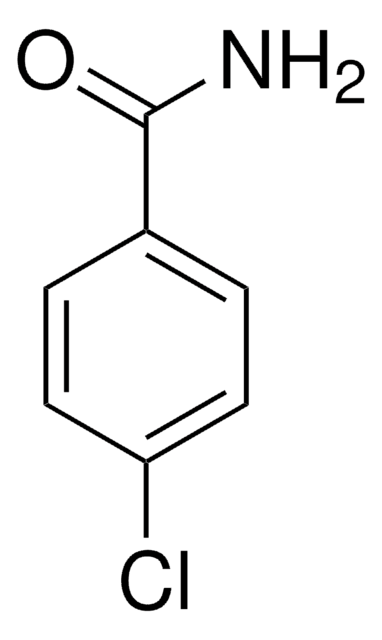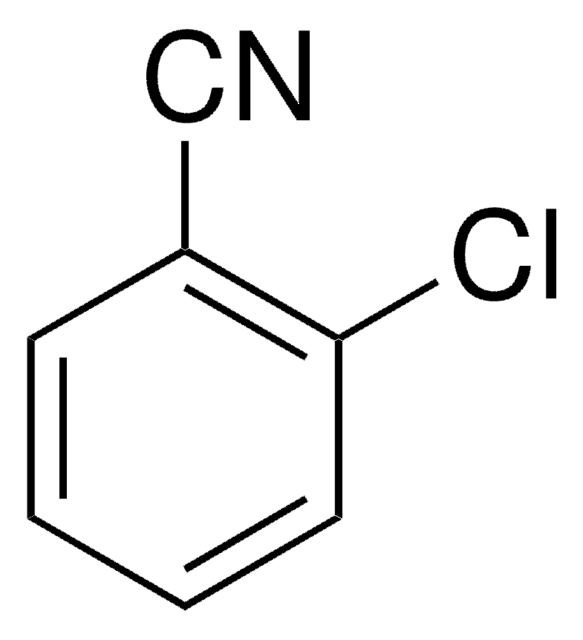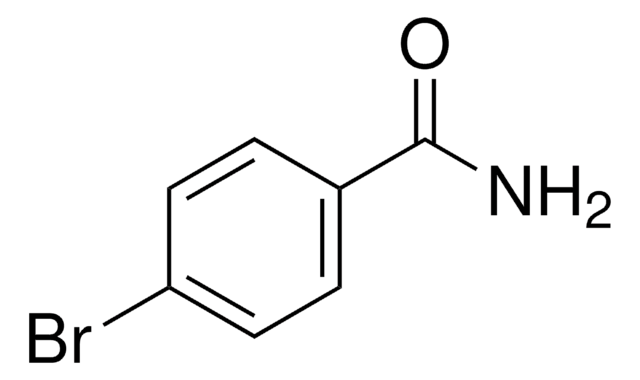Wszystkie zdjęcia(1)
Kluczowe dokumenty
About This Item
Wzór liniowy:
ClC6H4CONH2
Numer CAS:
Masa cząsteczkowa:
155.58
Numer WE:
Numer MDL:
Kod UNSPSC:
12352100
Identyfikator substancji w PubChem:
Polecane produkty
Próba
98%
Formularz
solid
mp
142-144 °C (lit.)
ciąg SMILES
NC(=O)c1ccccc1Cl
InChI
1S/C7H6ClNO/c8-6-4-2-1-3-5(6)7(9)10/h1-4H,(H2,9,10)
Klucz InChI
RBGDLYUEXLWQBZ-UHFFFAOYSA-N
Opis ogólny
2-Chlorobenzamid jest głównym produktem degradacji CCU (1-(2-chlorobenzoilo)-3-(4-chlorofenylo) mocznika), nowego regulatora wzrostu owadów. Ulega on hydrodehalogenacji z udziałem Pd w temperaturze pokojowej za pomocą KF i polimetylohydrosiloksanu (PMHS) z wytworzeniem benzamidu. Ulega on redukcji za pomocą NaBH4 w diglimie w temperaturze 162°C z wytworzeniem 2-chlorobenzonitrylu.
Ta strona może zawierać tekst przetłumaczony maszynowo.
Hasło ostrzegawcze
Warning
Zwroty wskazujące rodzaj zagrożenia
Zwroty wskazujące środki ostrożności
Klasyfikacja zagrożeń
Acute Tox. 4 Oral
Kod klasy składowania
13 - Non Combustible Solids
Klasa zagrożenia wodnego (WGK)
WGK 1
Temperatura zapłonu (°F)
Not applicable
Temperatura zapłonu (°C)
Not applicable
Środki ochrony indywidualnej
dust mask type N95 (US), Eyeshields, Faceshields, Gloves
Wybierz jedną z najnowszych wersji:
Masz już ten produkt?
Dokumenty związane z niedawno zakupionymi produktami zostały zamieszczone w Bibliotece dokumentów.
Mojtaba Mohseni et al.
Optics express, 26(8), 10230-10241 (2018-05-03)
In this manuscript, we present a detailed investigation of the impact of dispersion on the spectral resolution achievable by the application of spectral focusing in coherent Raman imaging. Our results reveal the detrimental effect of third order dispersion that limits
Z Qingxiang et al.
Journal of agricultural and food chemistry, 48(6), 2572-2575 (2000-07-11)
It is reported that 2-chlorobenzamide, one of the chief degradation products of CCU (1-(2-chlorobenzoyl)-3-(4-chlorophenyl) urea), a new insect growth regulator, is a potential carcinogen, but few studies about its environmental stability have been found. This paper is concerned with the
Wenying Lu et al.
Journal of agricultural and food chemistry, 52(26), 7759-7762 (2004-12-23)
1-(2-chlorobenzoyl)-3-(4-chlorophenyl)urea (CCU), a new analogue of diflubenuron and PH-6038, has been widely used in agriculture and forestry as a molt-inhibiting hormone insecticide which was developed in China. 2-Chlorobenzamide, a main degradation product of CCU in the environment, has been identified
Reduction of amides with NaBH4 in diglyme at 162? C.
Zhu H-J, et al.
New. J. Chem., 27(2), 409-413 (2003)
L Guoguang et al.
Journal of agricultural and food chemistry, 49(3), 1304-1308 (2001-04-21)
It has been reported that 1-(2-chlorobenzoyl)-3-(4-chlorophenyl) urea (CCU), an insect growth regulator, has no measurable toxicity to nontarget organisms and is essentially harmless to humans. However, one of its degradation products, 2-chlorobenzamide (CBA), is suspected of being a carcinogen. Therefore
Nasz zespół naukowców ma doświadczenie we wszystkich obszarach badań, w tym w naukach przyrodniczych, materiałoznawstwie, syntezie chemicznej, chromatografii, analityce i wielu innych dziedzinach.
Skontaktuj się z zespołem ds. pomocy technicznej









